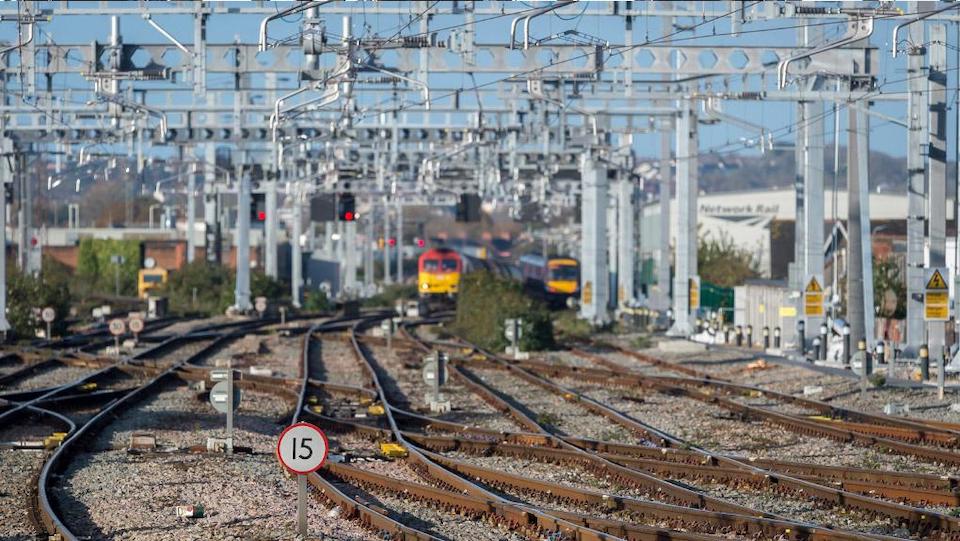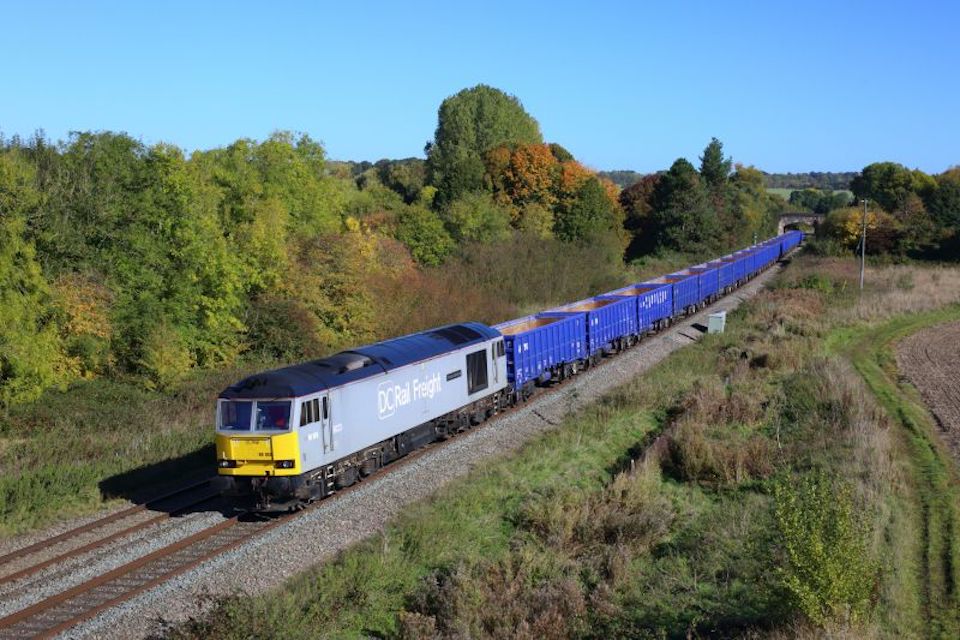Britain’s big winners go the extra mile in the latest official figures

Rail freight moved across Britain’s railway network had its ups and downs in the last quarter – and that’s no reference to the hilly gradients on the line. DCRail and Colas posted record distances travelled per freight vehicle, up by over thirty per cent and just over one hundred per cent, respectively. Freightliner’s heavy haul division and GB Railfreight also recorded increases, reflecting the continued boom in construction and infrastructure in the southeast of the country.
The UK Office of Rail and Road, supported by the boffins at the Office for National Statistics, has published its latest quarterly review of the rail freight industry. A massive surge forward in the construction industry has propped up the rail sector with a massive fourteen per cent rise in traffic. Construction made up over a third of all freight moved in the quarter, which is the second-largest share of all freight moved. Freight volumes in this sector have reached 1.38 billion net tonne-kilometres, the highest value since the time series began in April 1998.
A welcome stabilisation in the global logistics chain is posited as the reason behind the equally impressive intermodal maritime increase of seven per cent in the same quarter the previous year. As the commodity with the largest share of freight moved, it accounts for over a third of all freight moved between April and June – the period measured in today’s figures.
Fuel haulage reflects increasing reliance on renewables
There are encouraging figures in the ship-to-shore intermodal (maritime) and bulk and construction materials (primarily aggregates) sectors. However, despite that, the amount of freight moved across Britain’s railway has shown a marginal decrease of one per cent, according to statistics published by the Office of Rail and Road today (21 September 2023). The release of the figures, usually made early in the day, was somewhat delayed on this occasion. This may have been related to the prime minister’s announcement the previous afternoon concerning scaled-back commitments on climate change, which grabbed the headlines. However, there are several complexities in this quarter’s figures, which may also have been responsible for burning the midnight LEDs at the statistics office.

Intermodal maritime and Construction were the only two commodities that saw a rise in freight moved volumes. This upward trajectory, alongside their combined share of 71 per cent of all freight moved, highlights the importance of these commodities to rail freight in Great Britain. “Freight moved volumes fell for all of the other commodities, in the context of economic activity remaining depressed”, said the Office of Rail and Road. “Volumes of metals fell by 18 per cent compared with the previous year. There were 0.28 billion net tonne kilometres, making it the lowest April to June quarter since the start of the time series [in 1998]. Metals account for seven per cent of all freight moved. Oil and petroleum volumes reduced by eleven per cent. Aside from during the pandemic, this was the lowest volume since the time series began, at 0.20 billion net tonne kilometres.” Intermodal non-maritime saw a reduction of three per cent.
DCRail officially “busy”
There were increases for four operators. Colas Rail’s freight vehicle kilometres more than doubled, potentially down to increased engineering support work, but the company has been active in niche operations, such as moving timber. DCRail, the trading name of Devon and Cornwall Railways, had a large rise too, increasing by nearly a third. Both these operators recorded their respective highest value since the time series began in April 2010. “We knew DCRail had been busy but it is now official”, said David Fletcher, the Director Rail at Cappagh Group, who operate DCRail. “The latest ORR quarterly statistics show that freight vehicle kilometres operated by DCRail increased by nearly a third year on year to the highest value since the time series began in April 2010. Well done to all the team at DCRail in this great achievement and thank you to all our valued customers who trust us to deliver.”

The overall figures in the report were dragged down by big falls for two of the three biggest operators with the largest share of freight vehicle kilometres. DB Cargo UK had a reduction of 17 per cent, and Freightliner Intermodal had a reduction of seven per cent. Aside from the figures, perhaps the most disappointing measure was the prime minister’s speech on climate change measures, delivered late in the afternoon of the previous day, which made no reference to rail freight whatsoever. Despite the modest reduction in rail freight kilometre overall, the sector is still a large unrecorded passive contributor to carbon reduction. That analysis makes Britain still a big winner overall.




